10 Best Herbal Creams For Red Eyes

Herbal creams for red eyes are natural remedies that aim to soothe irritation and reduce inflammation using plant-based ingredients.
These creams often contain herbs like chamomile, calendula, and green tea, which are known for their anti-inflammatory and antioxidant properties. They are typically preferred by individuals seeking alternatives to conventional eye drops, especially those with sensitive skin or allergies. While they may provide relief for mild redness, they are not a substitute for medical treatment in cases of infection or severe inflammation.
It is important to consult a healthcare professional before using herbal creams to ensure they are safe and appropriate for your specific condition.
FREE Herb Drying Checklist
How to make sure every batch retains maximum flavor, color, and aroma without the risk of mold or over-drying. Eliminate guesswork and trial-and-error, making herb drying faster, easier, and more efficient every time.
Table of Contents
1. Matricaria chamomilla
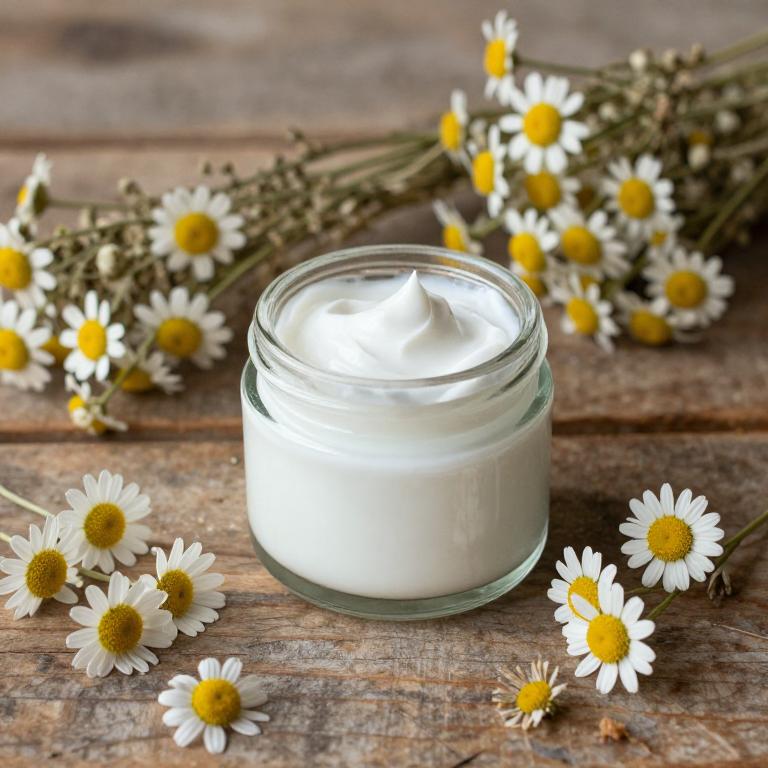
Matricaria chamomilla, commonly known as chamomile, is often used in herbal creams for its soothing and anti-inflammatory properties.
These creams are particularly beneficial for individuals experiencing red eyes due to their ability to reduce irritation and inflammation. Chamomile contains compounds like bisabolol and chamazulene, which have been shown to calm the skin and promote healing. When applied topically, chamomile creams can help alleviate discomfort and redness associated with eye strain or minor irritations.
However, it is important to consult a healthcare professional before using any herbal remedy, especially near the delicate eye area.
2. Hypericum perforatum
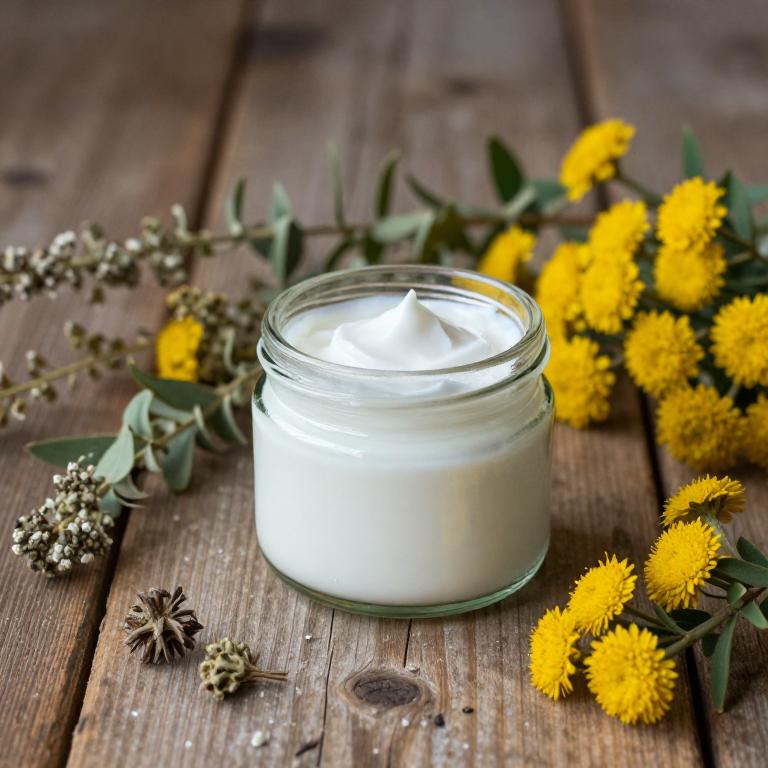
Hypericum perforatum, commonly known as St. John's Wort, is a herbal plant that has been traditionally used for its anti-inflammatory and analgesic properties.
While it is well-known for its use in treating mild depression, some people have explored its potential in topical applications, such as creams, for conditions like red eyes. These creams may contain extracts of the plant that are believed to reduce inflammation and soothe irritation in the eye area. However, it is important to note that the use of St. John's Wort on the eyes is not well-documented in scientific literature, and there is limited evidence supporting its effectiveness for red eyes.
As with any herbal remedy, it is advisable to consult a healthcare professional before using St. John's Wort-based products on the eyes to ensure safety and appropriateness.
3. Lavandula angustifolia

Lavandula angustifolia, commonly known as English lavender, is often incorporated into herbal creams due to its calming and anti-inflammatory properties.
These creams are believed to help alleviate symptoms associated with red eyes by reducing irritation and promoting soothing relief. The essential oils in lavender are thought to have a mild antiseptic and vasoconstrictive effect, which may help reduce redness and swelling. However, it is important to consult a healthcare professional before using lavender-based products on the eyes, as they may cause allergic reactions or interact with other treatments.
While some people find these creams beneficial for mild eye discomfort, they should not replace medical advice or prescribed treatments for more serious eye conditions.
4. Camellia sinensis

Camellia sinensis, the plant from which green tea is derived, is often incorporated into herbal creams for its potential soothing and anti-inflammatory properties.
These creams may be marketed as natural remedies for red eyes, claiming to reduce irritation and promote eye comfort. While some studies suggest that compounds in green tea, such as catechins, may have mild antioxidant effects, there is limited scientific evidence supporting their efficacy for treating redness or eye conditions. It is important to consult a healthcare professional before using any herbal cream, as improper use could potentially worsen eye health.
Overall, while camellia sinensis-based creams may offer a gentle alternative for some individuals, they should not replace proper medical treatment for persistent or severe eye issues.
5. Urtica dioica
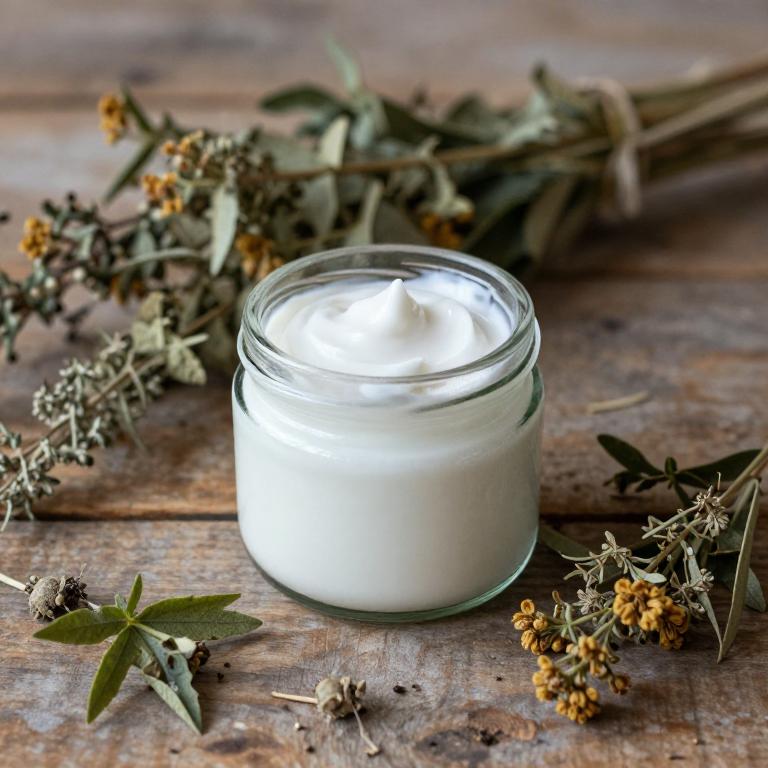
Urtica dioica, commonly known as stinging nettle, has been traditionally used in herbal medicine for its anti-inflammatory and soothing properties.
When formulated into creams, it can provide relief for red eyes by reducing inflammation and irritation. These creams often contain extracts of the leaves, which are rich in vitamins, minerals, and antioxidants that support eye health. The cooling effect of the cream may also help alleviate discomfort caused by allergies or minor eye infections.
However, it is important to consult a healthcare professional before using any herbal remedy, especially for eye conditions, to ensure safety and effectiveness.
6. Salvia officinalis
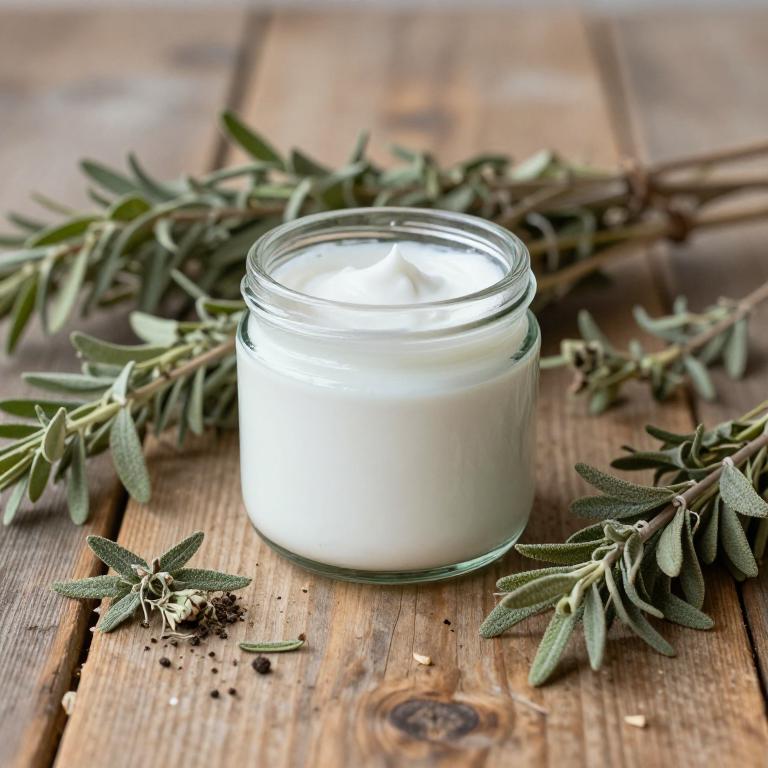
Salvia officinalis, commonly known as sage, has been traditionally used in herbal medicine for its anti-inflammatory and astringent properties.
When incorporated into herbal creams, salvia officinalis may help soothe irritated eyes and reduce redness by calming inflammation and promoting healing. These creams often contain other complementary ingredients like chamomile or calendula, which further enhance their soothing effects. However, it is important to consult a healthcare professional before using such products, especially for individuals with sensitive eyes or existing eye conditions.
While some anecdotal evidence supports the use of sage-based creams for red eyes, scientific research on their efficacy remains limited.
7. Achillea millefolium
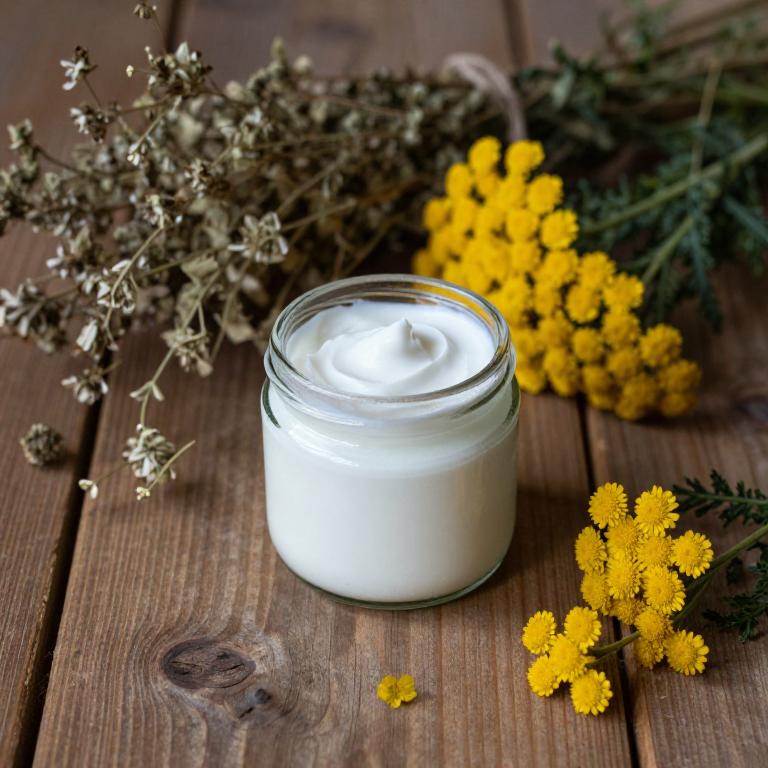
Achillea millefolium, commonly known as yarrow, has been traditionally used in herbal medicine for its anti-inflammatory and astringent properties.
When formulated into creams, it may offer potential relief for red eyes by reducing irritation and inflammation. These creams often contain a blend of yarrow extract and other soothing botanicals, which can help calm sensitive eye areas. However, it is important to consult a healthcare professional before using any herbal cream on the delicate eye area to ensure safety and effectiveness.
While some users report benefits, scientific evidence supporting its efficacy for red eyes is limited, so it should be used with caution.
8. Vitex agnus-castus
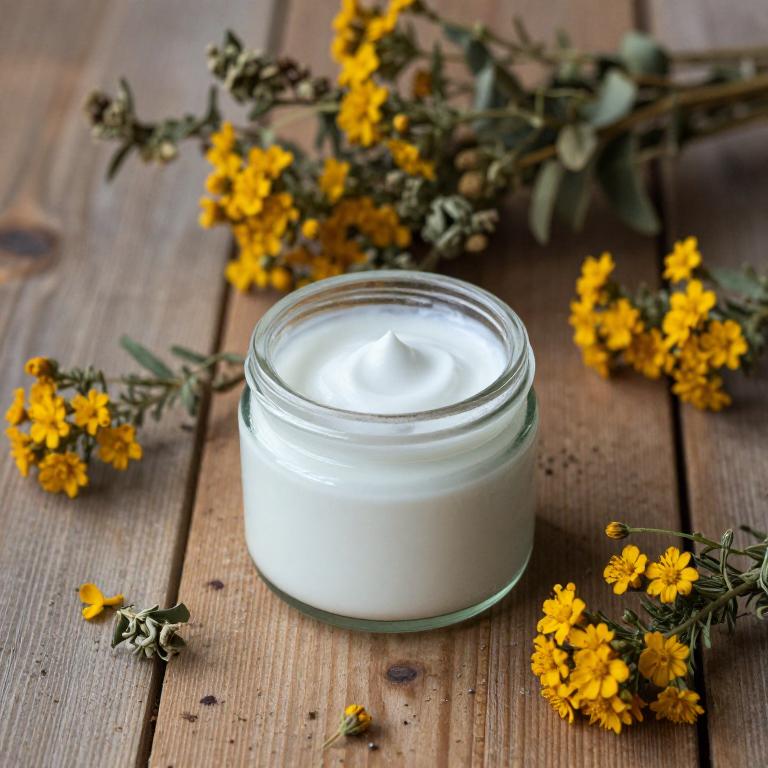
Vitex agnus-castus, commonly known as chasteberry, is often used in herbal remedies for its potential calming and anti-inflammatory properties.
When incorporated into herbal creams, it may help soothe irritation and reduce redness associated with red eyes. These creams are typically formulated with other soothing ingredients like aloe vera or chamomile to enhance their effectiveness. However, it is important to consult a healthcare professional before using such products, especially if the redness is due to an infection or underlying condition.
While some people find relief from vitex-based creams, their efficacy can vary, and they should not replace medical treatment when necessary.
9. Rosa canina

Rosa canina, also known as dog rose, is a traditional herbal remedy that has been used for its anti-inflammatory and soothing properties.
Rosa canina herbal creams are often formulated with the fruit of the Rosa canina plant, which is rich in antioxidants, vitamins, and essential fatty acids. These creams are commonly recommended for individuals suffering from red eyes due to their ability to reduce irritation and promote healing of the delicate eye area. The natural ingredients in these creams can help alleviate symptoms such as dryness, itching, and redness without the use of harsh chemicals.
However, it is important to consult a healthcare professional before using any herbal remedy, especially for eye conditions, to ensure safety and effectiveness.
10. Equisetum arvense
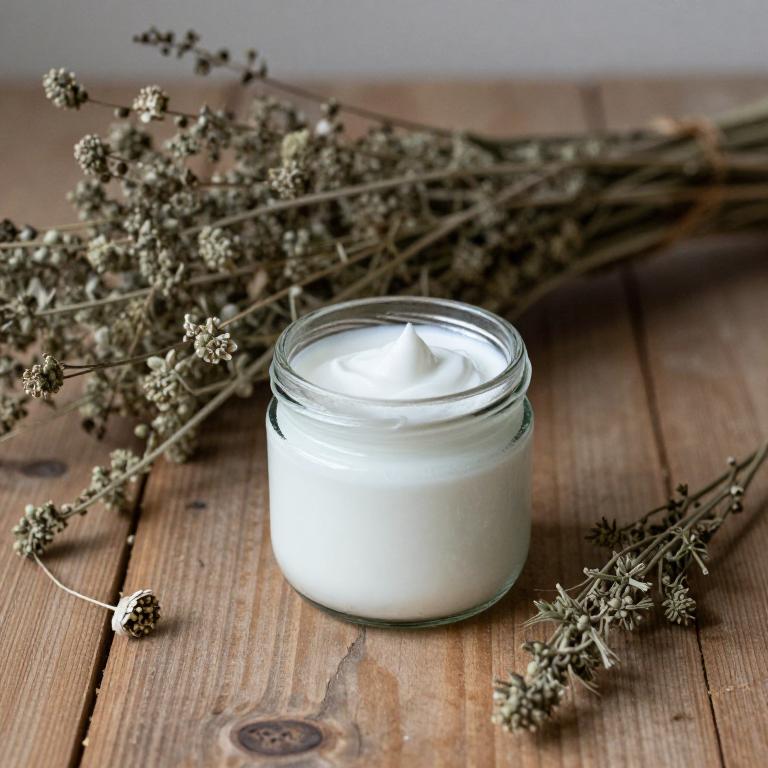
Equisetum arvense, commonly known as horsetail, is a plant often used in herbal remedies due to its high concentration of silica and other minerals.
Herbal creams containing Equisetum arvense are sometimes used to alleviate symptoms of red eyes, as they are believed to have anti-inflammatory and astringent properties. These creams may help reduce eye irritation and swelling by promoting healing and tightening blood vessels. However, it is important to consult a healthcare professional before using such products, especially if you have existing eye conditions or are using other medications.
While some people find relief with these natural remedies, their effectiveness can vary, and they should not replace conventional medical treatments for eye issues.